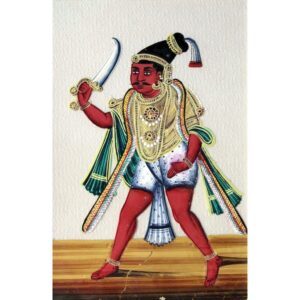The Gonds are the largest Adivasi community of Dravidian origin in India tracing their roots to the Pre-Aryan era. The word Gond is derived from Kond which means green mountain in the Dravidian idiom. They call themselves koi or koitur which means unclear but are popularly known as Gond since they lived in the green mountains.
The Gonds inhabit a large area spreading from the Godavari gorges in the south to Vindhya Mountains in the north. In Madhya Pradesh, they have populated the forests of Vindhyas, Satpura, and Mandla in the Amarkantak range for centuries. The central region of India called Gondwana was named after the Gondi people who lived there for centuries. The Ain-I-Akbari mentions four separate Gond Kingdoms situated in the northern, central, and southern parts of India. Over time the Gonds were deprived of their kingdoms and their land, as well as their survival, was threatened.
It is through their festivals, paintings, songs, and dances that the Gonds channel their artistic expression and remain rooted in their culture. Like most Tribal art, the Gonds painted the walls of their homes as an expression of religious sentiment and devotion similar to their mesolithic forbearers. Gond paintings depict all aspects of Tribal life, local flora, fauna, Gods and Goddesses, festivals, folk-takes and myths making storytelling an important element. Bright colours, imaginative use of lines, dots and organic forms are characteristic of these paintings.
The Gond painting gained popularity in the 1980s when the late Jangarh Singh Shyam, a Gond artist from Narmada Valley, was recognized for his talents by J. Swaminathan, the then director of Bharat Bhavan. Jangarh Singh Shyam was the first Gond artist to use paper and canvas for his art, creating a school known as ‘Jangarh Kalam’. Today, the late artists’ extended and immediate family members have become renowned artists themselves. Trained by Jangarh himself these next generation of artists have developed their style, some of them are Nankusiya Shyam (his wife), Japani Shyam, and Mayank Shyam (his children), and other family members such as Venkat Singh Shyam, Subhash Vyam, Bhajju Shyam and Durga Bai.






